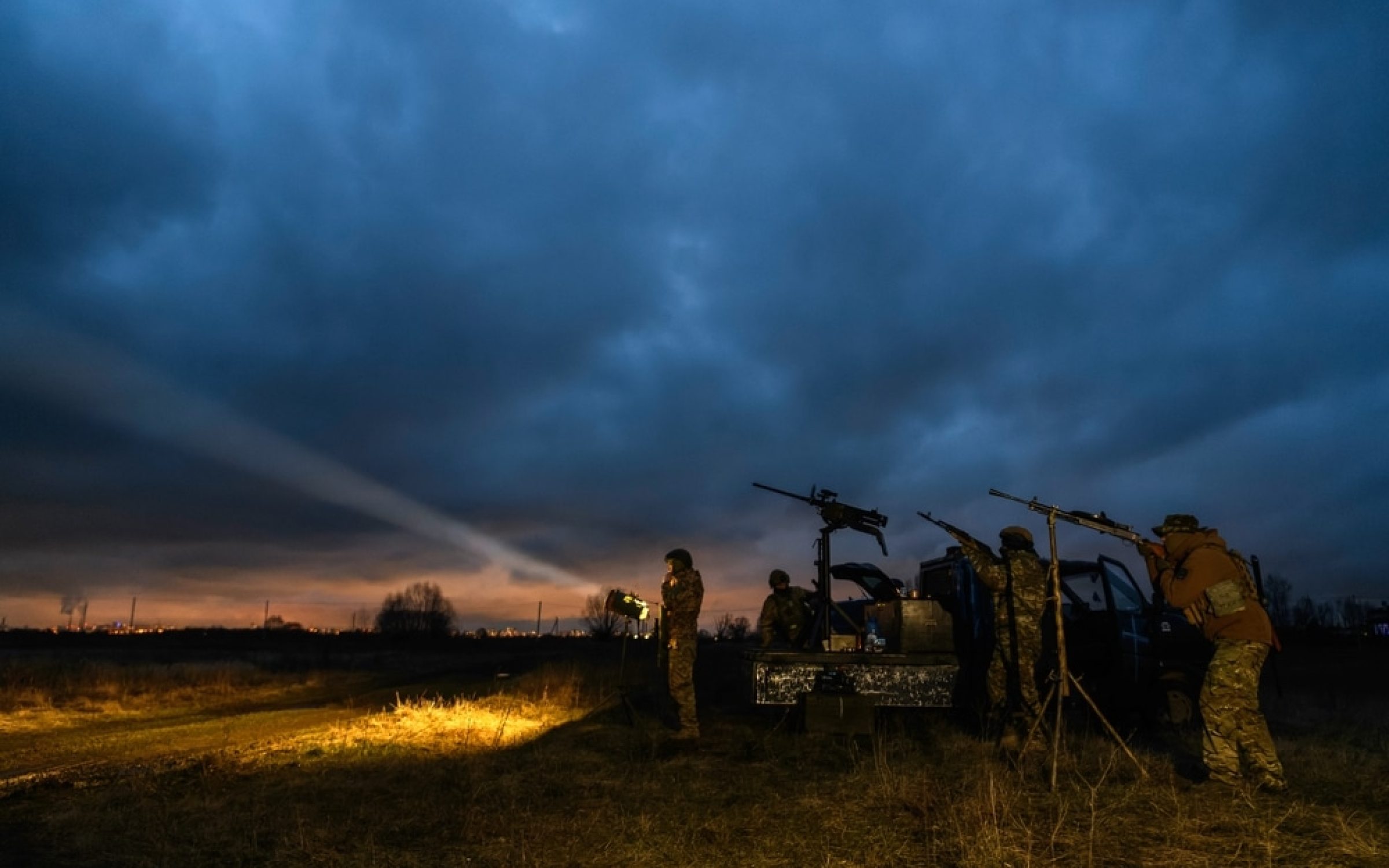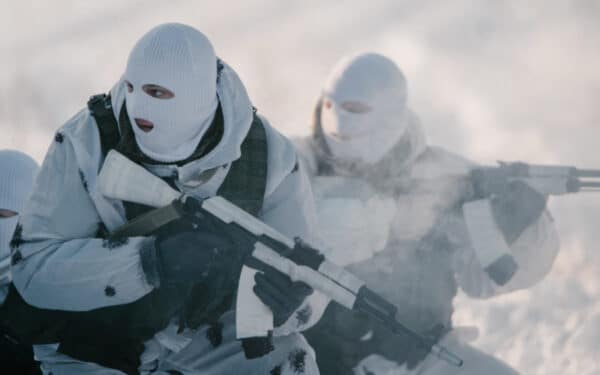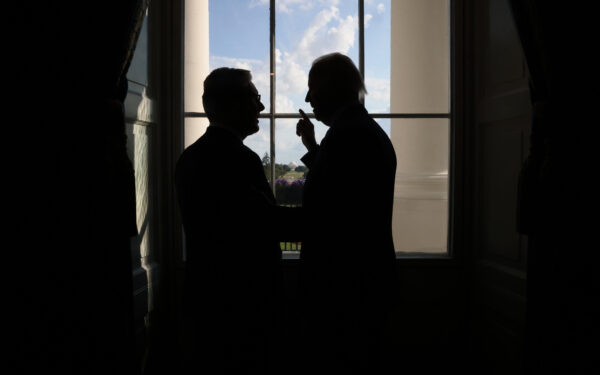On 31 July, Ukraine repelled Russia’s largest-ever long-range drone attack, intercepting all 89 drones fired at Kyiv. Ukraine has maintained this impressive defensive record for over a year. From December 2023 to May 2024, 82 per cent of Russian drones were shot down, and 83 per cent were destroyed in the six months beforehand.
These figures are a credit to the Ukrainian armed forces, but more can be done to protect Ukrainian territory.
For the 18 per cent of Russian drones that do reach their targets, hundreds of Ukrainians are killed, and invaluable public infrastructure is obliterated. Ukraine needs to strike Russian drone systems before they leave the ground, targeting weapons caches, munitions factories, and air bases.
So what can NATO do to help?
NATO’s failure to lend substantive political support – permitting the strongest possible attacks on Russian territory outside of occupied Ukraine – must be corrected immediately. Ukraine has just enough means to square up to Russia in the aerial domain. In fact, July was the first month when Ukraine fired more drones than Russia: Russia attacked with 426 Shahed-type drones, whille Ukraine responded with 520.
However, America’s risk-averse policy bars Ukraine from firing American-made Army Tactical Missile System rockets into Russia, and is already squandering opportunities for Ukraine to narrow Russia’s biggest competitive advantage: satellite-guided “KAB” bombs.
“KAB” bombs are currently the biggest strategic nightmare for Ukrainian drone pilots and anti-aircraft units. With a range of 40km, the bombs can hit enemy forces, whilst being tantalisingly out of reach for the most advanced Ukrainian air defences. In dense urban areas, KAB bombs cause catastrophic damage. “All buildings and structures simply turn into a pit after the arrival of just one KAB”, reported a Ukrainian soldier of the 3rd Assault Brigade.
Hundreds of KAB bombs are fired daily from Sukhoi Su-34s. So when the Russians parked dozens of these aircraft at Voronezh Malshevo air base, 160km from the border, Ukraine had a golden opportunity to strike its most important target in the Russian air arsenal.
Firing ATMS missiles – given their accuracy, 300 km range and impregnability from Russian interception – would have guaranteed Ukraine a successful attack on the Su-34s. The planes at Voronezh Malshevo accounted for reportedly half of Russia’s KAB bombers, and out of 100 in-service Su-34s, Ukraine has shot down three using its own weaponry.
But eliminating three KAB bombers isn’t enough to swing the balance of the drone war in Ukraine’s favour. Only with a relaxation of rules around ATMS usage can the US redeem itself from its destructive shortsightedness, and allow Russian air forces to be hit where it truly hurts.
Of course, not all Russian air power can be destroyed before it leaves the ground, and the threat of drone attacks for Ukrainian soldiers is continuous. It’s no surprise, therefore, that one of the most coveted gadgets on the frontline is now a pocket-sized olive green cube – nicknamed “sugar” – designed to flag incoming Russian drones.
“Tsukorok” debuted in 2022 on an electronic battlefield where Russia had the upper hand. But the simplicity and compactness of this detection device – built by London-based software engineers – has led to sweeping uptake by soldiers across the frontline, from medics to gunners.
The Tsukorok turns on when attacks are suspected, and signals with a sharp beeping sound for troops to turn on their jamming devices, which identify the frequencies of incoming drones before disabling them. Over 50 similar gadgets are available, including “Kara Dag”, which tells soldiers the direction of incoming drones from over 4 km away.
But since a surge in Tsukorok popularity across 2023, demand is currently 10 to 50 times greater than the speed at which detectors can be supplied. Other companies are not only in a race to increase output, but also to innovate faster than their designs can be copied by the larger, wealthier Russian Defence Ministry. “Falcons” – a Ukraine-based firm – is refining a novel approach to drone detection: a multi-antenna system which identifies the drone’s location of origin, allowing Russian operators to be targeted on their own soil.
Falcons are also trying to improve their drones’ memory capacity by a week. This means their software can memorise the flight paths of friendly drones, regularly coming from Ukraine, to avoid blue-on-blue incidents.
While such developments promise a powerful competitive advantage for Ukraine, the drone industry is plagued with delays and funding problems. Kara Dag imports parts from Poland and over half of Tsukorok’s parts come from China. These global supply chains mean the delays of unreliable deliveries, blockades on imports, and exhausted manufacturing facilities are felt harder.
Drone detectors are not a miracle worker but, for a price of as little as $34, they are a cheap and reliable way to protect Ukrainian soldiers. More must be done by NATO to meet Kyiv’s demand with adequate supply.
Finally, more attention must turn towards the sites of Russian drone targeting, including energy infrastructure and electrical transmission systems, which wreak blackouts across Ukraine. The damage is so severe that the nation’s 18Gw capacity has been halved by Russian attacks. In response, the EU granted Ukrainian power company, Ukrenergo, €100 million in July, supporting a massive reconstruction programme. This is a step in the right direction, but other NATO members must reciprocate, and assist in efforts to alleviate the terrible situation that Ukraine will inevitably fall into this winter, where the consequences of power shortages will be most damaging.
Two weeks ago, Ukraine conducted its longest-ever range strike on Olenya, 1,800km from the border. Despite this success, NATO must not watch on with complacency, having just witnessed the Olenya attack and issued Ukraine with F-16s, assuming that victory is a done deal.
The skies are a decisive battlefield and the drone war is a vital one to win.
Drone detector start-ups need support and Ukraine needs more autonomy to fire on strategic targets outside of Russian-occupied territory.
Alexander McDermott is a Policy Fellow at The Pinsker Centre, a campus-based think tank which facilitates discussion on global affairs and free speech. The views in this article are the author’s own.
Write to us with your comments to be considered for publication at letters@reaction.life




